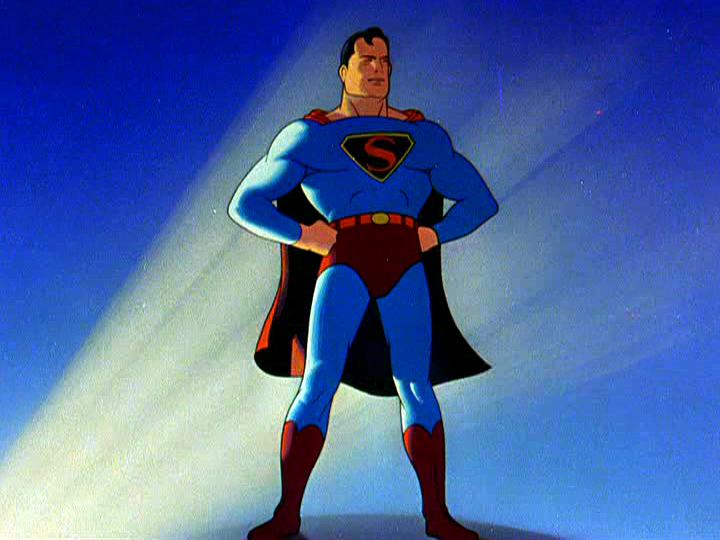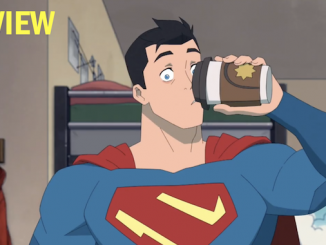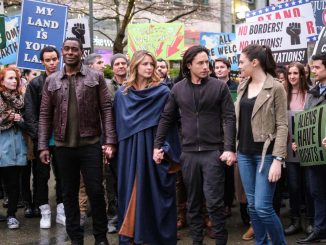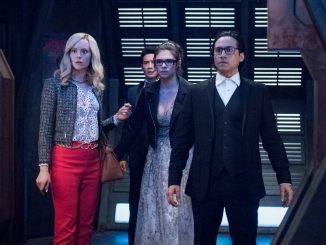
Superman Homepage reviewer Micah Pickering reviews the Fleischer Superman animated shorts for those nostalgic for the 1940s.
Check out his review of the cartoon titled “Eleventh Hour”.
Superman has always served as a symbol of American courage since his inception. That courage and strength would be showcased heavily during World War II. “Eleventh Hour” is an installment of the iconic Fleischer/Famous Studios from 1942, and features Superman directly fighting Imperial Japanese forces.
Now on to the review!
 Rating – 4 (out of 5): This cartoon may not seem like a big deal now, but I’d like to invite those who read this review to imagine that they live in November 1942. A full year hasn’t even passed since the attack on Pearl Harbor. Imagine that you go into a movie theater and the cartoon that plays before the movie features this brand new character named Superman. A bulletproof man lights up the big screen, sinking battleships, beating up enemy soldiers, and rescuing prisoners from certain death. That’s the stuff legends are made of.
Rating – 4 (out of 5): This cartoon may not seem like a big deal now, but I’d like to invite those who read this review to imagine that they live in November 1942. A full year hasn’t even passed since the attack on Pearl Harbor. Imagine that you go into a movie theater and the cartoon that plays before the movie features this brand new character named Superman. A bulletproof man lights up the big screen, sinking battleships, beating up enemy soldiers, and rescuing prisoners from certain death. That’s the stuff legends are made of.
The story is simple: Lois and Clark are prisoners in a Japanese internment camp in Yokohama. Clark secretly sneaks out every night to attack valuable Japanese targets. Superman proves to be an expert saboteur, demolishing bridges, sinking battleships, and making short work of anyone standing in his way. He sneaks back into the cell with Lois as she wonders if Superman was close by.
Japanese military officers are desperate to stop Superman’s relentless crusade. They decide to use Lois Lane as a bargaining chip to coerce Superman into retreat. They post a sign up stating that Lois will be executed if Superman does not cease his attacks. Unfortunately Superman does not see the posted warning and continues his one man war. As the dust settles on his most recent strike, Superman notices the warning and rushes to save Lois.
Lois stands blindfolded in front of a firing squad. Just before she is shot to death, Superman shields her from the bullets. Superman easily dominates wave after wave of the soldiers, smashing their weapons and throwing them around like ragdolls. He takes Lois to safety, and we jump forward in time to when Lois is back in America being interviewed about her experience.
When the reporters ask her about Clark, she assures them that Superman was looking after him back in Japan. The cartoon ends in Japan where Superman continues to sabotage the Imperial Japanese military.
This is the first installment of this series where the action is implied to continue after the cartoon’s end. It leaves on a note that Superman was as committed to the war effort as one could be, using his incredible power to stand against America’s enemies. Superman may be a more global figure now, but his roots are firmly planted in the United States. This cartoon is significant because it shows how animation was used to show support for the war effort. There were plenty of other studios making cartoons inspired by WWII. Characters like Donald Duck, Bugs Bunny, and plenty others featured in cartoons meant to rally Americans to support the war effort.
This cartoon is a good reminder of what made Superman an icon of American pop culture in his early years.




